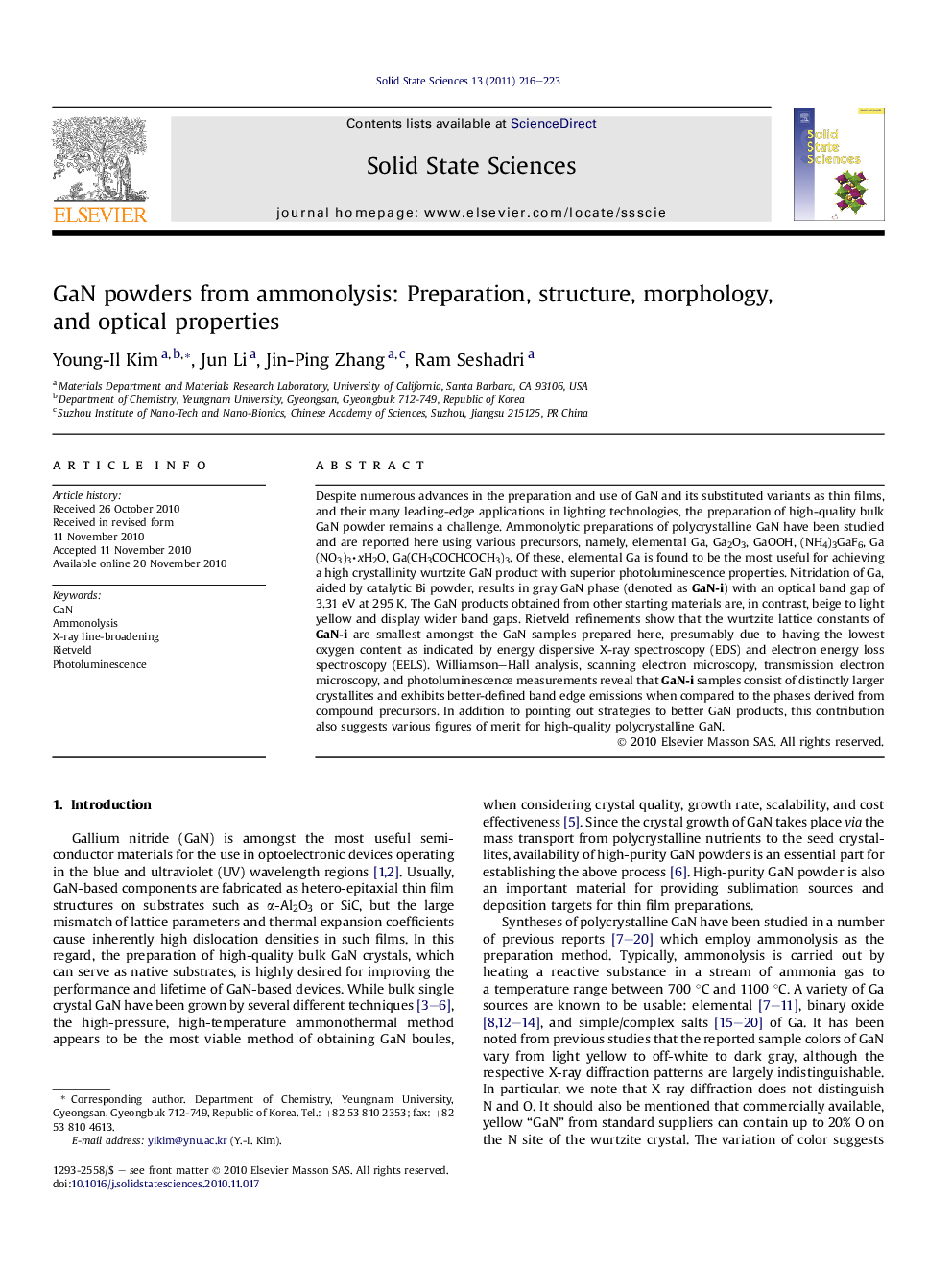| Article ID | Journal | Published Year | Pages | File Type |
|---|---|---|---|---|
| 1505488 | Solid State Sciences | 2011 | 8 Pages |
Despite numerous advances in the preparation and use of GaN and its substituted variants as thin films, and their many leading-edge applications in lighting technologies, the preparation of high-quality bulk GaN powder remains a challenge. Ammonolytic preparations of polycrystalline GaN have been studied and are reported here using various precursors, namely, elemental Ga, Ga2O3, GaOOH, (NH4)3GaF6, Ga(NO3)3⋅xH2O, Ga(CH3COCHCOCH3)3. Of these, elemental Ga is found to be the most useful for achieving a high crystallinity wurtzite GaN product with superior photoluminescence properties. Nitridation of Ga, aided by catalytic Bi powder, results in gray GaN phase (denoted as GaN-i) with an optical band gap of 3.31 eV at 295 K. The GaN products obtained from other starting materials are, in contrast, beige to light yellow and display wider band gaps. Rietveld refinements show that the wurtzite lattice constants of GaN-i are smallest amongst the GaN samples prepared here, presumably due to having the lowest oxygen content as indicated by energy dispersive X-ray spectroscopy (EDS) and electron energy loss spectroscopy (EELS). Williamson–Hall analysis, scanning electron microscopy, transmission electron microscopy, and photoluminescence measurements reveal that GaN-i samples consist of distinctly larger crystallites and exhibits better-defined band edge emissions when compared to the phases derived from compound precursors. In addition to pointing out strategies to better GaN products, this contribution also suggests various figures of merit for high-quality polycrystalline GaN.
Graphical abstractFigure optionsDownload full-size imageDownload as PowerPoint slide
